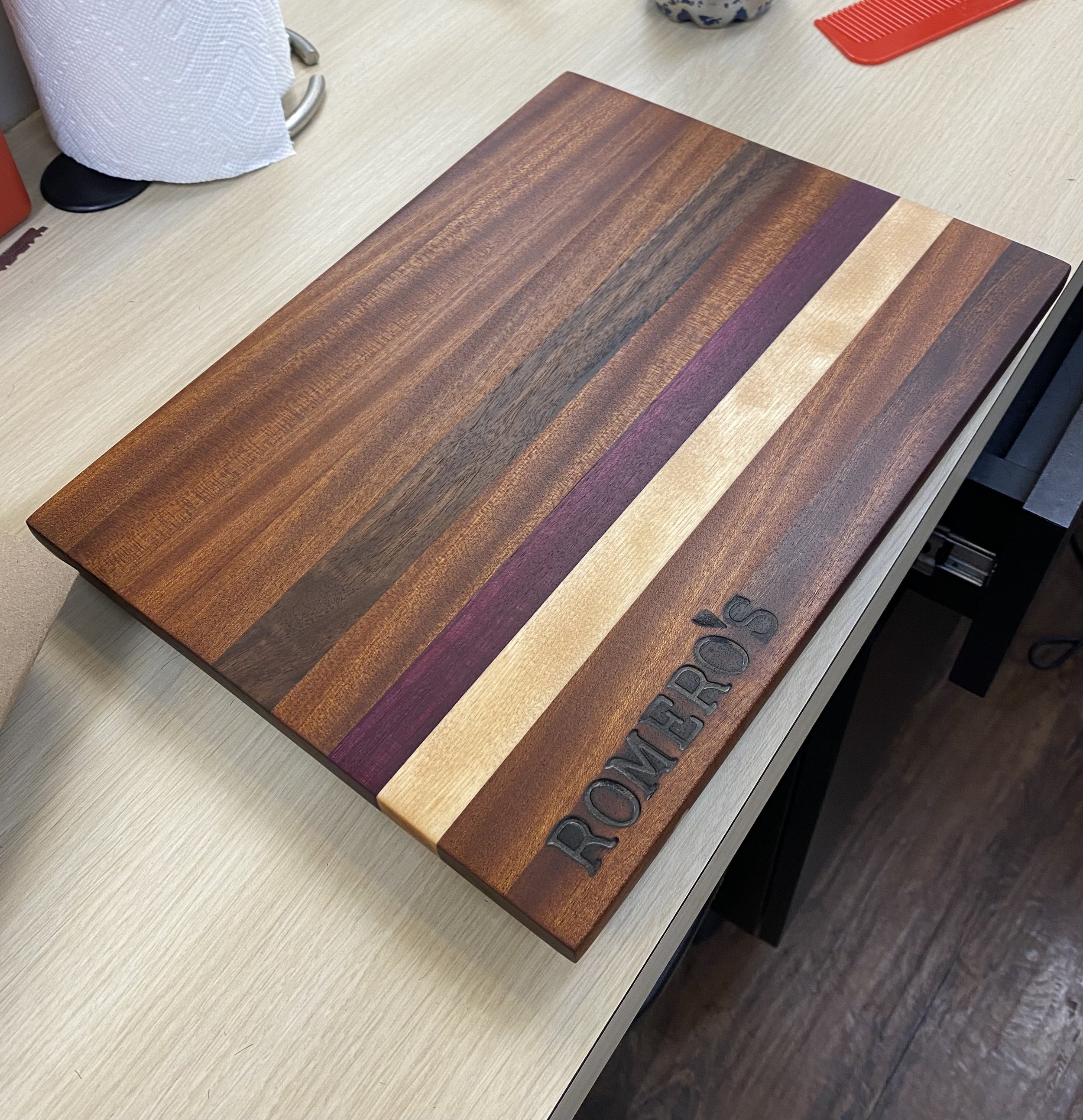
Cutting Boards
I make two different styles of cutting boards, End Grain and Edge Grain.
What is the difference between end grain and edge grain?
According to JohnBoos.com*, “The primary contrast between edge grain and end grain cutting boards lies in the their wood grain orientation and construction methods, each offering its own set of advantages…” (See the end of the page to learn more.)
Maple, Bloodwood & Cocbolo
(Edge Grain)
Cherry
(End Grain)
Black Walnut and White Oak
(Edge Grain)
Hard Maple and Purple Heart
(Edge Grain)
Black Walnut
(End Grain)
Maple and Black Walnut
(End Grain)
White Oak and Sycamore with thin strips of Black Walnut (Edge Grain)
White Oak and Sycamore with thin strips of Black Walnut (Edge Grain)
Sapele, Zebra Wood, Purple Heart, Maple & Paduak (Edge Grain)
Cascading Black Walnut and Figured Maple
(Edge Grain)
Sapele with accents of Black Walnut, Maple and Purple heart (Edge Grain)
Maple with Purple Heart Accent
(Edge Grain)
Sapele, Zebra Wood, Purple Heart & Maple
(Edge Grain)
Maple with Purple Heart, Paduak and thin strips of Black Walnut (Edge Grain)
Black Walnut, White Oak, Paduak & Granadillo
(Edge Grain)
Interested in ordering a custom cutting board?
Click the button below!
What is the difference between end grain and edge grain cutting boards?
According to JohnBoos.com, “Edge grain boards are formed by laying long strips of premium hardwood rails side by side and gluing them together. The wood fibers run horizontally. Edge grain cutting surfaces are considered knife-friendly compared to other materials like plastic or glass cutting boards.
“And end grain is created by cutting short square pieces of maple, cherry or walnut hardwood and arranging them vertically and stood on end. End grain boards demonstrate a self-healing process in that when a knife cuts into an end grain board’s surface, it slides in between the wood fibers, the fibers separate, and then close back up, keeping your knife edge sharper, longer.”















